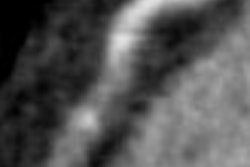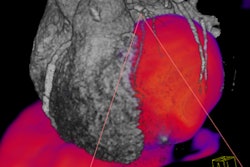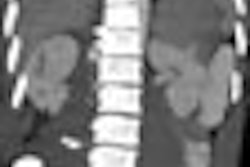Although x-ray contrast agents may cause or contribute to a patient's death, the odds of this occurring in the U.S. are slightly greater than one in a million, according to a study in the American Journal of Roentgenology. However, because the majority of death certificates do not identify the specific agent involved, it is difficult to assess the risk of an agent class or individual product in these mortalities.
"We found that deaths are rarely attributed to adverse effects in therapeutic use of contrast media; rates were from 1.1 to 1.2 per million eaches (contrast media packages) distributed," wrote Diane K. Wysowski, Ph.D., and Parivash Nourjah, Ph.D., who work in the division of drug risk evaluation at the U.S. Food and Drug Administration (AJR, March 2006, Vol. 186:3, pp. 613-615).
The pair conducted an analysis of data from the U.S. National Center for Health Statistics of the annual number of deaths from 1999-2001 in 41 state and jurisdictional health departments. They specifically looked for the ICD-10 code Y57.5, adverse events in the therapeutic use of x-ray contrast media.
"Death certificates were analyzed by the number having contrast agents listed as the underlying cause of death and the total number of mentions on the certificates (the sum of the immediate cause, contributing to the underlying cause, and underlying cause and other significant conditions not contributing to the underlying cause)," they wrote.
In addition, the duo also collected death certificates from 1999 that had the ICD-10 codes of T88.6, anaphylactic shock due to adverse effect of correct drug or medicament properly administered, and T88.7, unspecified adverse effect of drug or medicament. These certificates were then studied, and if contrast media was the cause of death, they were included with the Y57.5-code group.
To derive the denominator of the patients administered contrast media to compare against the number of deaths attributed to its administration, Wysowski and Nourjah obtained contrast media package distribution data for U.S. healthcare facilities from the IMS National Sales Perspective database of IMS Health (Fairfield, CT). Because an unknown number of patients are administered contrast media each year, the researchers used the annual number of contrast media packages distributed as a surrogate for the number of persons administered these drugs.
Wysowski and Nourjah found that only nine deaths in 1999 were attributed to ICD-10 code Y57.5, x-ray contrast media. Another 42 deaths were attributed to the total for the year under the T88.6 and T88.7 codes. They wrote that 28 (58%) of the 48 deaths due to contrast agents were associated with renal failure or nephropathy, nine (19%) with anaphylactic shock and allergic reactions, five (10%) with cardiopulmonary arrest, four (8%) with respiratory failure, and two (4%) with stroke or cerebral hypoxia.
They also uncovered that a majority (94%) of the deaths were in whites, including Hispanics; that 60% of the decedents were women (60%); and that the median age at death was 73 years. Wysowski and Nourjah noted that the name of the contrast agent was not included in 46 of the 48 death certificates; on two that were, one was a high-osmolar ionic agent and one was a low-osmolar nonionic agent.
This was of concern to the researchers, because without a specific contrast agent named on the death certificate, it makes improving the assessment of risk by class or individual contrast agent more difficult.
"To enable this, we suggest that the names of administered contrast agents be recorded in patients' medical records and communicated to primary care physicians and certifiers of death in the event of serious sequelae after an identified recent radiologic procedure," they wrote.
By Jonathan S. Batchelor
AuntMinnie.com staff writer
February 28, 2006
Related Reading
USP report blasts radiology medication errors, January 19, 2006
Progress slow in improving patient safety in U.S. hospitals, December 16, 2005
Computerized physician order entry system linked with increased patient mortality, December 7, 2005
Mistakes tied to 2,000+ U.K. deaths last year - report, November 3, 2005
Computers no cure-all for medical errors - study, March 9, 2005
Copyright © 2006 AuntMinnie.com



















